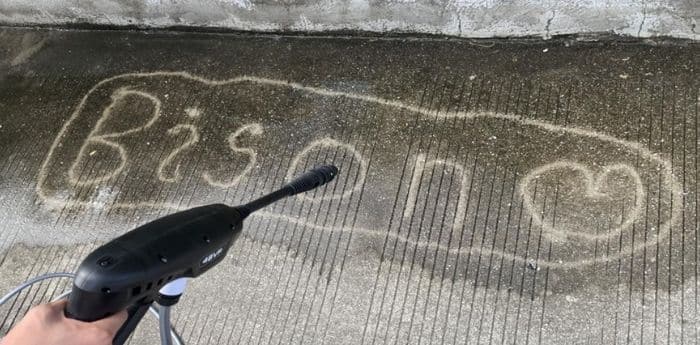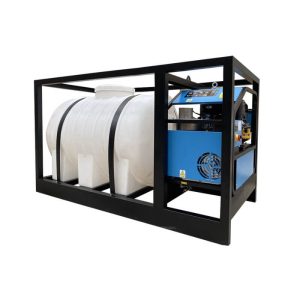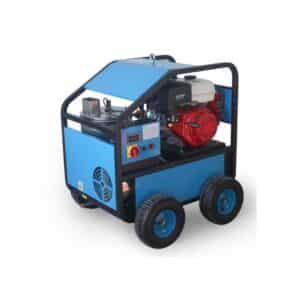
BISON Santy
Hello, I am Santy, the funder of bisonclean.com. I have been in cleaning machinery field for more than 5 years now, and the purpose of this article is to share with you the knowledge related to pressure washer from a Chinese supplier's perspective.
Table of Contents
Fences can accumulate dirt, mold, algae, and other unsightly stains that not only degrade their appearance but can also cause structural damage if left unchecked. Do you want to keep your fence clean? Pressure washing is an effective method that can quickly restore your fence to its original condition simply by using a pressure washer.
The pressure washer produces a powerful stream of water to remove dirt and debris without the use of harsh chemicals, making it an environmentally friendly choice for fence maintenance. This technique can quickly and efficiently clean large areas, saving time and labor compared to manual cleaning methods. Additionally, pressure washing can prep the surface for further treatments like painting or staining.
However, using a pressure washer requires specific know-how to avoid damaging the wood or other fence materials. Therefore, In this blog, BISON will guide you on how to pressure wash your fence safely and effectively by providing the correct settings, nozzles, and techniques.
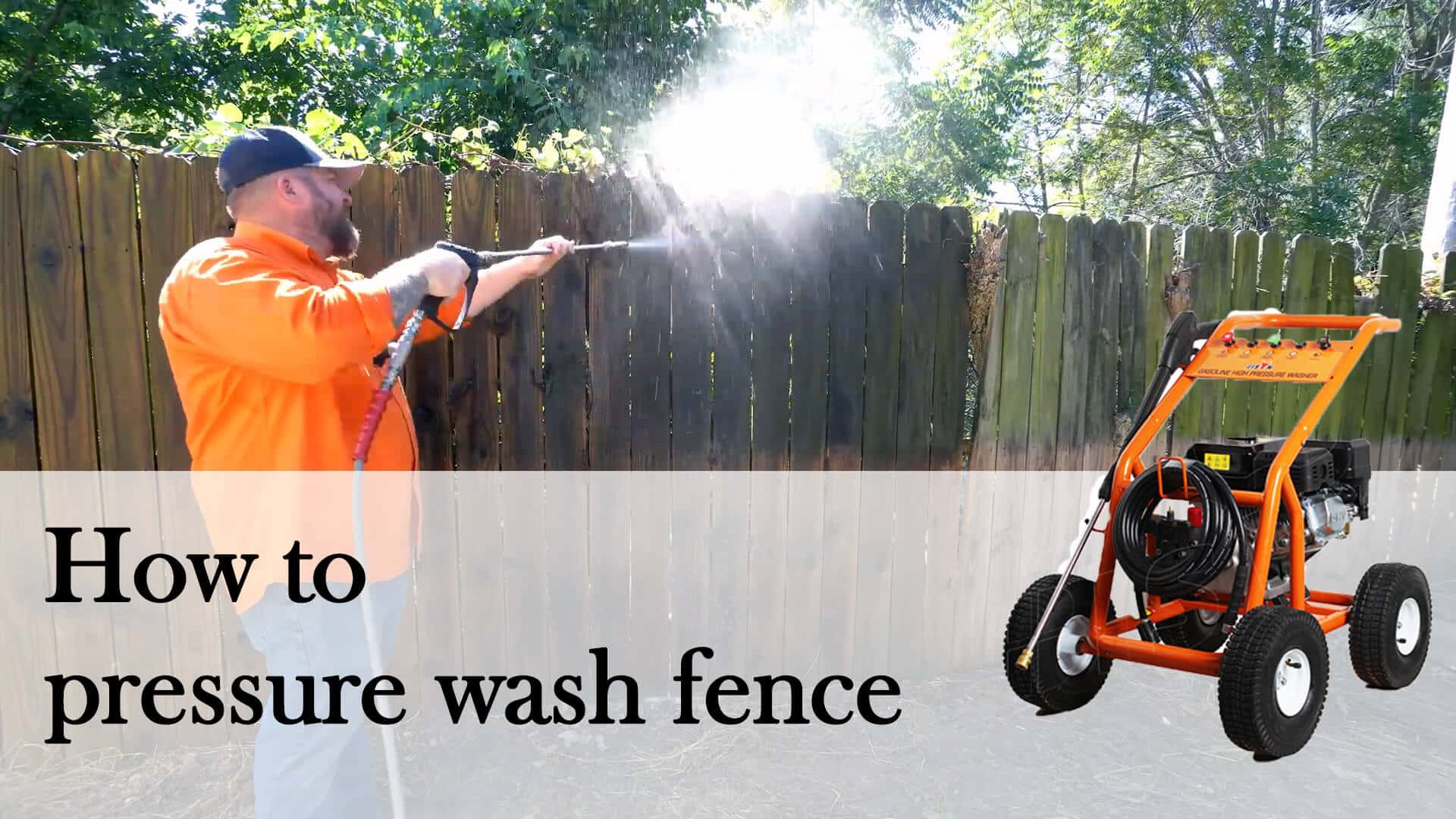
Preparing for pressure washing
It is a wise choice to prepare the right tools in advance, which will increase the speed and smoothness of the cleaning process.
1. Selecting the right pressure washer and accessories
- Types of pressure washers: For fence cleaning, both electric and gas pressure washers are suitable. Electric models are quieter, generally lighter, and are suitable for light to moderate fence cleaning, but you will need to be careful about the length of the power cord. Gas models have high GPM output, require no electricity, and are better suited to handling larger or dirtier fences, but they are noisier and require more maintenance. 2-3 GPM pressure washers will run out of water quickly, make sure you are close to a hose or water source.
- Pressure settings: A pressure washer with 1200 to 2000 PSI is usually powerful enough for most fences without causing damage. A PSI of 500 to 800 for softwoods should be adequate to keep your fence clean.
- Choosing nozzles and cleaning agents: The wrong nozzle can cause serious damage to your fence. A wider angle (25-40 degrees) nozzle is typically best for fences as it disperses pressure over a wider area, reducing the risk of damage. For cleaning solutions, opt for detergents specifically formulated for BISON pressure washers and suited to your type of fence material.
2. Assessing the condition of the fence
Fences are made of different materials, be it wood, vinyl, or metal, so each material has specific cleaning requirements and tolerances.
Address any repair needs prior to washing to prevent worsening conditions under high pressure.
All issues that need repair must be addressed before cleaning to prevent deterioration under high pressure. Inspect carefully first for damage such as cracks, rot (in wood), discoloration (in vinyl), or rust (in metal).
3. Implementing safety precautions
- pressure washer user manual: Be familiar with its specific operation and safety features, and know the location of the emergency on/off switch.
- Protective equipment: Always wear protective gear including gloves, goggles, and sturdy boots.
- Prepare the area: Clear the surrounding area of debris (such as leaves and branches) and cover any fragile items such as nearby plants, electronics, and glass with tarps or plastic sheets.
Steps to pressure wash a fence
#Step 1: wetting the fence
Start by using a low-pressure spray to dampen the entire fence evenly. This base layer of water will act as a barrier, diluting the cleaner, and making it less potentially harsh. Softening built-up dirt and debris makes cleaning easier.
#Step 2: applying cleaning agents
This is not necessary and is only for fences that are heavily soiled or have mold.
Spray the wood cleaner with a spray nozzle that is usually black, with a 65-degree tip. Spray from bottom to top to avoid streaking and allow the cleaner to sit on the fence for 5-10 minutes to penetrate and loosen the dirt, but do not let it dry, as this can be harder to rinse off. You can wash it in sections, apply detergent alternately, and finish washing before drying.
#Step 3: cleaning technique
Start by finding a small, hidden area and cleaning it with a low-pressure nozzle to test how the fence responds to the water pressure. Once you confirm it doesn’t damage the surface, switch to a higher setting suitable for your fence type. Maintain a consistent distance of about 2-3 feet from the fence and use a smooth, sweeping motion. Move the stream horizontally and systematically from one end to the other. Combine a pressure washer rotating brush with your pressure washer wand if running into troublesome areas or deep stains. There are two points to note during the cleaning process:
- Angle and direction: Hold the nozzle at a 45-degree angle to effectively lift and remove dirt without driving it deeper into the material. Starting from the top and moving to the bottom prevents dirty water from dripping over already-cleaned sections.
- Even cleaning: Make sure to clean all areas evenly to avoid patchy cleaning marks, also known as “zebra stripes.” Keep the nozzle moving; concentrated water pressure may damage the fence.
#Step 4: rinsing the fence
After thoroughly scrubbing the fence with the cleaner, rinse the surface with clean water using a higher pressure setting. Rinse thoroughly using a top-down motion to prevent residue from being left behind when rinsing, which attracts dirt and can cause surface degradation.
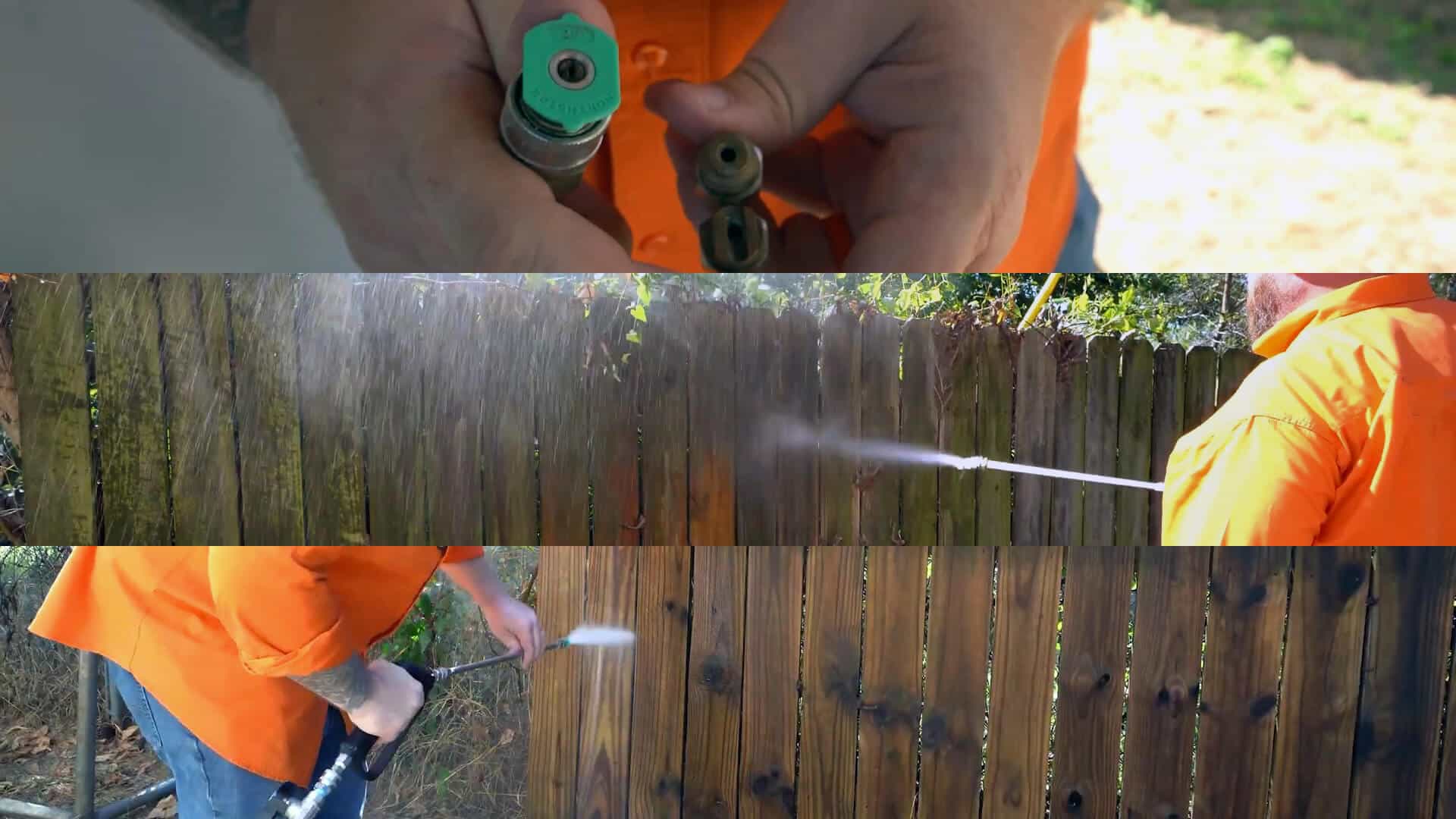
Precautions after cleaning a fence
1. Drying time: Allow the fence to dry completely, which typically takes between 24 to 48 hours, depending on the weather and the material of the fence. Trapped moisture may cause mold or rot. If stain, sealant, or paint is to be applied after the work is completed, wait at least 48 hours for the fence to dry.
2. Inspection for missed spots: Once the fence is dry, carefully inspect it for any areas you missed during the cleaning process. Look for any spots where there is still dirt or algae, and again note the fence for loose construction, damaged planks, peeling paint, or any signs of structural 3. weakness that needs repair.
3. Add a protective coating: This not only enhances the beauty of your fence, but it also protects it from weather elements and UV rays. Each coating has its benefits:
- Stain: Allows the wood grain to show through and is available in a variety of shades to enhance the wood’s aesthetic appeal.
- Sealants: Offer a clear or light-colored coating that protects against moisture and rot.
- Paint: Offers a variety of colors and provides protection from moisture, weather, and rain, but requires more maintenance.
4. Regular maintenance tips: Generally speaking, BISON recommends that it is best to wash your fence once a year with a pressure washer. However, in areas with high humidity, high salt, near vegetation, or high pollution, more frequent washing may be required.
Conclusion
Pressure washing a fence with a pressure washer doesn’t seem like a difficult task, does it? In this guide, We cover the steps you need to take to effectively and safely wash your fence with a pressure washer and also outline regular maintenance tips. It’s time to start the actual cleaning. BISON encourages you to find free time to start practicing, and you will be amazed at how new your fence looks once the dirt and grime are washed away.
As you embark on your fence maintenance journey, equip yourself with the best tools for the equipment – a BISON pressure washer. BISON, a leading manufacturer of pressure washers and accessories in China, offers top-quality products that ensure efficiency and safety. With many years of sales experience and technical reserves, BISON is always ready to provide professional, detailed help to dealers and customers. Contact BISON now to get detailed product information.
FAQs About Pressure Wash Fence
BISON does not specifically recommend bleach. Bleach can adversely affect the pressure washer seal. It can also discolor the fence.
Difficult-to-remove mold spots can be scrubbed by hand with a stiff brush and a bleach solution, then rinsed clean with a hose.
Yes, a pressure washer will effectively remove deck stains. Use a water pressure of about 1,500 pounds per square inch (PSI) and hold the nozzle at about a 30-degree angle, at least 3 inches from the surface. But be aware that too much pressure or being too close to the ground can damage the deck.
Yes, but laminate flooring is softer than wood and can be damaged easily, requiring very careful cleaning. Once damaged, it is susceptible to stains and sun damage. Follow the flooring manufacturer’s instructions. Typically, you will use the lowest pressure setting and position the nozzle at least 8 inches from the surface.
You might also enjoy
Questions?
Contact Us Today.
Related Products
Find more?
Related Posts

How to clean pool tiles with a pressure washer
This comprehensive guide will walk you through the steps to restore your pool tile to its original glory using a pressure washer.

How pressure washing can help with oil field cleaning
This article will show how pressure washing can provide a cleaning solution for the oilfield industry and explore its benefits and applications.
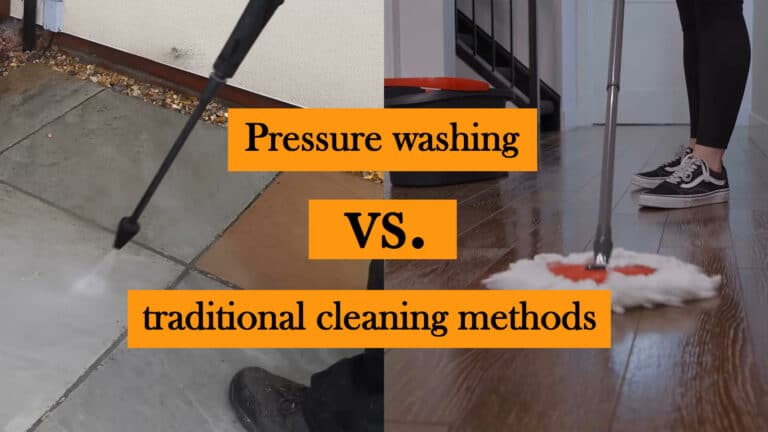
Pressure washing vs. traditional cleaning methods
In this article, BISON will take an in-depth comparison of pressure washing vs. traditional cleaning methods to highlight their pros and cons.
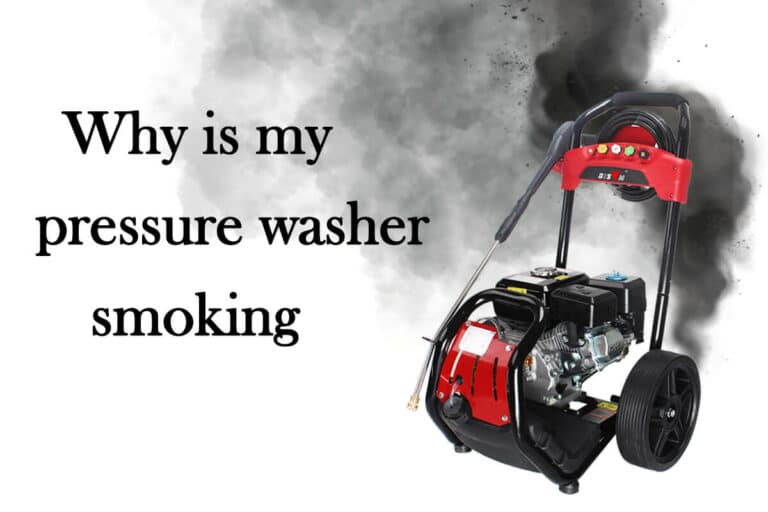
Why is my pressure washer smoking
This blog will help you understand the common reasons why your pressure washer may smoke. In the end, you’ll learn what the smoke could mean

